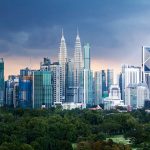
Vienna in 3 days – Wombat’s Hostels
Never been to Vienna? Well, it’s about time then. There is a lot to be seen, and our tips how to see Vienna in three days may be a good start.
Day 1: Encounter the old city
After breakfast, start the day with a tour of the Imperial Palace, viewing the private rooms of Emperor Francis Joseph (ruled 1848-1916) and those of his wife, Empress Elisabeth. In the Imperial Apartments, the Sissi Museum gives an insight into the life of the beautiful empress.
Certainly a must here: the Treasuries with the magnificent crown jewels.
Full-dress performances at the Spanish Riding School tickets must be ordered in advance.
Time for a little break? Drop into the dignified Demel cake shop, once a Purveyor to the Court (Kohlmarkt 14).
You can then continue to Judenplatz for a short visit to the Judenplatz Museum and the memorial in remembrance of the persecution of the Jews. You can also explore the maze of narrow streets where time seems to have stood still.
Now on to the oldest church in Vienna, St. Rupert’s (8th century), from where you have a nice view of the Danube Canal and Franz-Josefs-Kai. Climb up again to explore the medieval romanticism of Hafnersteig, Heiligenkreuz Court, the Jesuit Church and the quarter around Blutgasse, reaching on these winding paths the very centre of Vienna: St.Stephen’s Cathedralthe city’s most famous landmark for just 850 years. If your feet will still carry you, climb the 343 steps of the south tower: the panoramic view is certainly worth it. (Guided tour of the cathedral at 3 pm)
Go for a stroll across Graben with the baroque Plague Column or in the famous Kärntner Strasse, both of which are lined with nice shops and cafés and street musicians or artists playing at every other corner. Walk through the pedestrian zone toward the State Opera and on to the Secession a magnificent specimen of Art Nouveau architecture that has just celebrated its 100th birthday. Take your time to study the Beethoven frieze by Gustav Klimt.
The buildings on Linke Wienzeile and the subway pavilions at Karlsplatz are more wonderful examples of Art Nouveau by architect Otto Wagner.
Roam across the Naschmarkt this produce market is a delight for all the senses – easy to see that Eastern Europe (or even the Orient?) begins in Vienna.
Before you plunge into Vienna’s nightlife, you may want to stop by at wombats for a little rest and enjoy the happy hour (6 – 8 pm, 9-10 pm and 12-1 am) in our famous wombar before you go on celebrating in the city… Check out the info wall for any parties and concerts!
Nothing more authentic than an evening at a “Heuriger“ – one of the wine taverns with gardens in the hilly outskirts, and the more plain and remote they are, the cosier the atmosphere. Therefore, don’t just try places in Grinzing but also in Sievering, Pötzleinsdorf, or on the other side of the Danube in Stammersdorf.
In the city centre, there’s still time to wander around the old town. If you feel up to it, finish the evening in the maze of streets called Bermuda Triangle (Rabensteig / Seitenstettengasse) where you find one bar next to the other.
DAY 2: FROM SCHÖNBRUNN PALACE TO THE FERRIS WHEEL
Take tram 58 to Schönbrunn Palace. Here you can enter the extensive gardens, where you are immediately faced with the beautiful palace. The famous glass-and-steel Palm House is a 5-10 minute walk through the gardens. Take a walk up to Gloriette where a spectacular view over the palace and the city awaits you at the café. Or you can visit the Zoo, the maze & the labyrinth.
In the palace itself, rent an “Audio Guide” for an individual tour through the magnificent state rooms to see the living and working atmosphere of the Habsburgs.
Now take the U4 back to the city centre where at first you can stroll across Karlsplatz with theC hurch of St. Charles Borromeo and Otto Wagner’s Stadtbahn pavilions.
Do I hear your tummy rumbling? Sit down in any cosy inn. On the Naschmarkt you can find nice little restaurants!
There’s the guided tour in the State Opera House: the grand staircase, marble foyer and red-and-gold auditorium are well worth seeing. Afterwards, you will pass the Hotel Sacher behind the opera – famous for its chocolate cake – and take in the Monument against War and Fascism by Alfred Hrdlicka on Albertinaplatz.
Not far from here (Neuer Markt/ Tegethoffstrasse), go down to the Imperial Burial Vault, the final resting-place of the Habsburgs’ bones. From here, take the city bus (3A) or walk through Annagasse to Schwarzenbergplatz, behind which rise the exquisite gardens of the baroque Belvedere Palace – enjoy a great view of the city centre from the Upper Belvedere, in which the Austrian Gallery has a permanent exhibit of works by Klimt, Schiele and Kokoschka.
After so much art and history, some diversion should follow. From the South Railway Station (Südbahnhof), the “O” tram-line will take you to the big amusement park in the Prater (Wien-Nord station) – or walk to Südtiroler Platz and take the U1 to Praterstern.
Try a ride on the Giant Ferris Wheel and taste some typical Viennese hot sausages with sweet mustard at a “Würstelstand” (sausage-stand). Or else take in a real meal at theSchweizerhaus, for instance Spiegelkarpfen nach böhmischer Art (carp Bohemian style) or Stelze (roast leg of pork). If you have had enough of the fairground hubbub, go for a walk along the Prater Hauptallee – a paradise for jogging, in-line skating or strolling.
Enjoy Vienna’s cultural life to the fullest – after all, Vienna is a center for theater and music: in addition to the traditional venues, musicals, and concert stages, there is a lively alternative scene with numerous cabarets and venues for live music – check out Jazzland, Joe Zawinul’s Birdland, or Porgy & Bess.
There’s a busy nightlife in the pedestrian zones around Stephansplatz until the early morning hours. No problem finding a nice streetside café or good entertainment in one of the many side streets.
DAY 3 SPECIAL TIPPS
Now that you’ve seen quite a lot of Vienna already, you should have an opportunity to set your own focus of interest
But before that, a little tour of the Ringstrasse:
After breakfast, take your constitutional through the Burggarten Park across Heldenplatz and into the romantic Volksgarten Park where the Art Nouveau memorial to Austria’s most famous empress is a must for all fans of “Sissi”. Opposite the Volksgarten, there is the Parliament with the Athena fountain. Or have a refreshing walk through the cool Rathauspark past its many fountains, statues and exotic trees.
Facing the Vienna City Hall, there is the National Theatre – its programme is always a controversial discussion matter among the Viennese. Treat yourself to a Melange, Vienna’s most popular coffee variation, at Café Landtmann, a fashionable meeting-place for theatre people and politicians from the nearby government buildings.
The tour ends at the University Building and the picturesque neo-Gothic Votive Churchbehind it. Now plan the rest of the day according to ideas of your own… care for a few suggestions? Interested in whimsical architecture? Then go and see the Hundertwasser House (Kegelgasse/Löwengasse) – a “somewhat different” council house. More of this eccentric building style can be seen in the nearby KunstHausWien (with a permanent Hundertwasser exhibition).
The House of Music (1st district, Seilerstätte 30) is imaginative and unconventional; it presents musical highlights and visions, history and entertainment, according to the motto: “Your ears will be amazed.” Friends of classical or modern art can make a selection from many museums, exhibitions and galleries – for instance, the Museum of Fine Arts (Maria-Theresien-Platz) with its great collection of the old masters, in particular the Bruegel Room.
Vienna’s MuseumsQuartier is a spectacular cultural complex located on the fringe of Vienna’s old city and one of the world’s nine largest museum districts. It is a sensational blend of revitalized baroque architecture (the former court stables) and impressive modern edifices.
The new cultural district comprises the chalk-white Leopold Museum in the new section, theMuseum of Modern Art shrouded in dark-grey basalt, the Kunsthalle, Halls E und G (Vienna Festival, Dance Centre), some restaurants, the Architektur Zentrum Wien (Vienna Architecture Centre), the Zoom Children’s Museum, the Dschungel – a children’s theatre and experimental areas for cultural initiatives.
Article by Wombat’s Hostels







